June 13, 2025 | 02:34 GMT +7
June 13, 2025 | 02:34 GMT +7
Hotline: 0913.378.918
June 13, 2025 | 02:34 GMT +7
Hotline: 0913.378.918
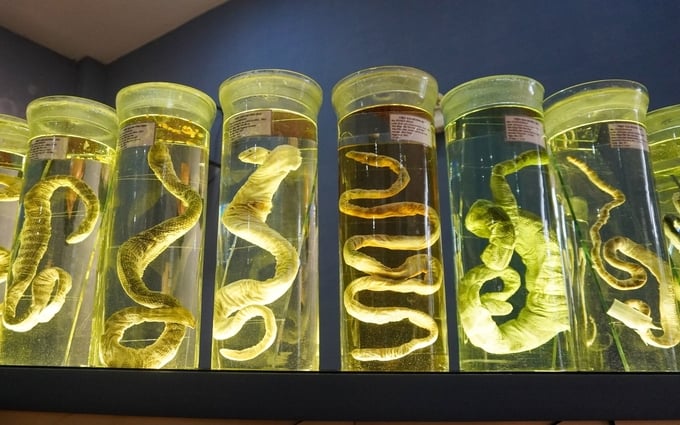
The Institute of Oceanography in Nha Trang City is preserving specimens of 26 species of Vietnamese sea snakes. Photo: DT.
62 species of sea snakes are found in the tropical and subtropical regions of the Indian Ocean and Pacific Ocean, spanning from the Western waters of Africa to the Panama Gulf. In which a significant number of species are of high economic value and are frequently processed into food or medication.
The Institute aims to increase community awareness of the conservation of marine biodiversity, particularly the sustainable development of sea snake resources, by conducting research and identifying the name, age, and species of the sea snake.
In accordance with The preserved specimens of sea snakes that are currently being conserved, displayed, and introduced at the Institute of Oceanography are the result of numerous field excursions that MSc. Cao Van Nguyen and his colleagues conducted to collect samples, according to a 25-year employee of the Institute.
The book Sea Snakes of Vietnam, co-authored by MSc. Cao Van Nguyen, asserts that sea snakes are a functional diet due to their health benefits and serve as a food source. Cuisine employs nearly all components of the sea snake. Furthermore, sea snakes are a valuable medicinal resource that are utilized in the production of Rheumatin and Lingzhi extract to alleviate rheumatism, discomfort in the back, insomnia, loss of appetite, and to fortify tendons and bones.
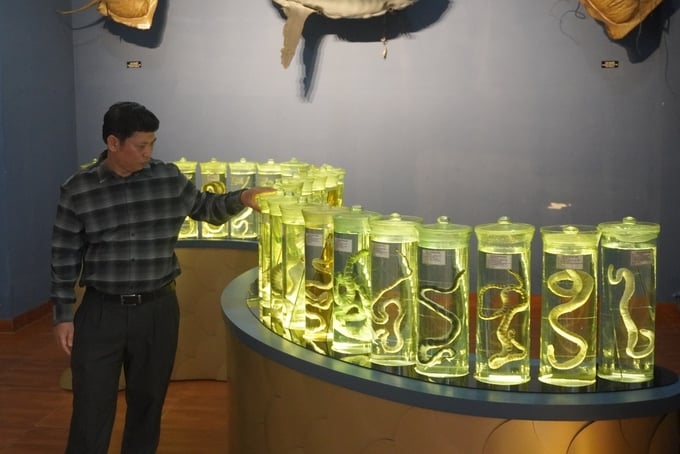
Master Cao Van Nguyen has worked at the Institute of Oceanography for more than 25 years. Photo: DT.
Some of the 26 species of sea snakes that are present in Vietnam are exceedingly uncommon. Hydrophis parviceps, for instance, is endemic to the Mekong Delta. This species is uncommon and is believed to be in danger of extinction. There were only four specimens of this species collected by the Institute of Oceanography between 2001 and 2015.
Additionally, the yellow-lipped sea krait (Laticauda colubrina) is the sole sea snake species that lays eggs, whereas the majority of sea snakes give birth to live offspring underwater. Coral reefs and mangrove forests in Nha Trang Bay and the coastal waters of Phan Thiet-Binh Thuan are frequent habitats for this species.
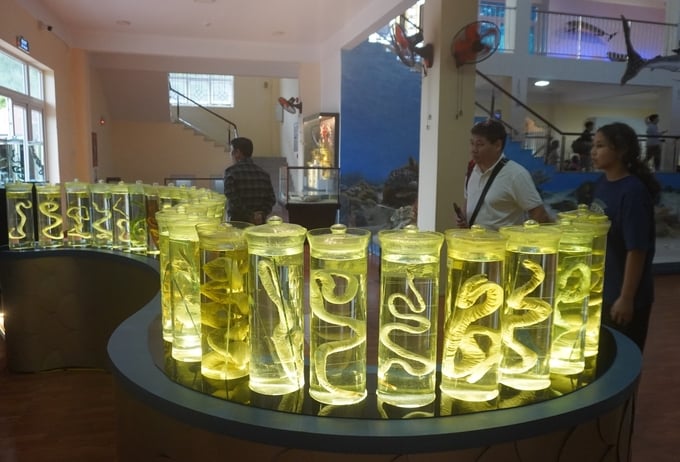
Tourists visit the Institute of Oceanography in Nha Trang City. Photo: DT.
However, the little file snake (Acrochordus granulatus) is not a member of the Hydrophiinae family, as it lacks venom and bears a resemblance to a marine snake. It is frequently observed in mangrove forests along the central coast of Vietnam, where it is occasionally captured for leather production or ornamental purposes.
The venom of sea snakes has the potential to cause rapid mortality by affecting the circulatory and nervous systems, destroying muscle cells, and causing respiratory paralysis. Nevertheless, MSc. Nguyen clarified that these snakes do not typically attack humans unless they perceive a threat.
Adult sea snakes are capable of foraging independently from birth and can reach lengths of 1 to 1.5 meters. Some individuals who are larger in stature can weigh nearly one kilogram. Vietnamese fishermen continue to capture and sell a variety of species, including Hydrophis curtus and Hydrophis cyanocinctus, at markets for prices that range from 500,000 to 800,000 VND per kilogram.
It is important to note that the abundance of trace nutrients and essential vitamins in sea snakes is particularly advantageous for individuals who engage in vigorous physical activity. This leads to the frequent consumption of marine snakes by athletes. In addition, MSc. Nguyen noted that the venom of marine snakes is employed in pharmaceutical production and scientific research. She also noted that the species is becoming scarcer, with only a handful of collection centers remaining in southern Vietnam.
At present, the number of marine snakes has experienced a significant decline. In 2008, statistics suggested that Vietnam produced an annual yield of approximately 82 tons. However, by 2013, this figure had decreased to approximately 62 tons, and by 2015, it had decreased to only 35 tons. This rate of exploitation may result in the depletion of the sea snake population in the near future.
Translated by Linh Linh
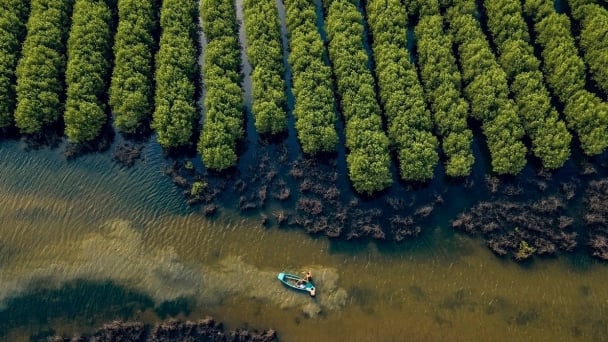
(VAN) Blue carbon is receiving attention for its rapid absorption capacity and vast potential. It represents a promising nature-based solution to respond to climate change.
/2025/06/11/3507-1-161904_583.jpg)
(VAN) Seagrass beds and coral reefs serve as 'cradles' that nurture life in the ocean depths, creating rich aquatic resources in Vietnamese waters.
![Turning wind and rain into action: [1] Forecasting for farmers](https://t.ex-cdn.com/nongnghiepmoitruong.vn/608w/files/news/2025/06/11/e5a48259d6a262fc3bb3-nongnghiep-111919.jpg)
(VAN) Weather is no longer just a matter of fate. Forecasts have now become an essential companion for farmers in every crop season.
/2025/06/10/2501-3-082025_983.jpg)
(VAN) Mr. Le Hoang Minh, Head of Vinamilk's Net Zero project, recently shared insights on the integration of production, energy, and technology in Vinamilk’s green transition journey.
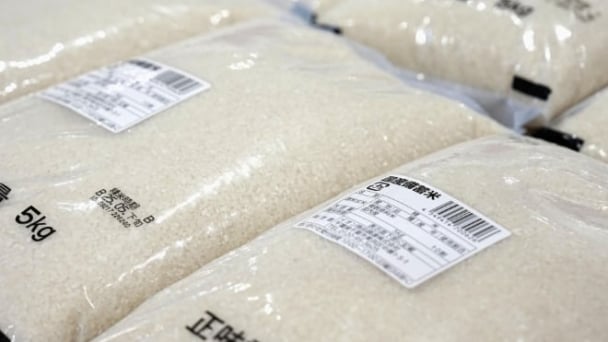
(VAN) Over half of large-scale rice producers feel that store prices for rice are 'too high', indicating that many of them share concerns with consumers about the elevated cost of the staple food in Japan.
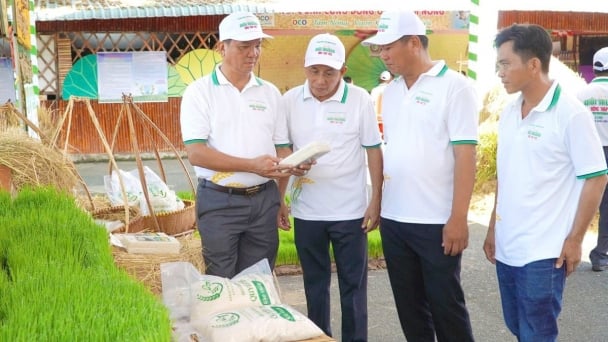
(VAN) Dong Thap has launched a meeting in response to the Action Month for the Environment under the theme 'Live Green - Join Hands for a Green Economy' at Tram Chim National Park.
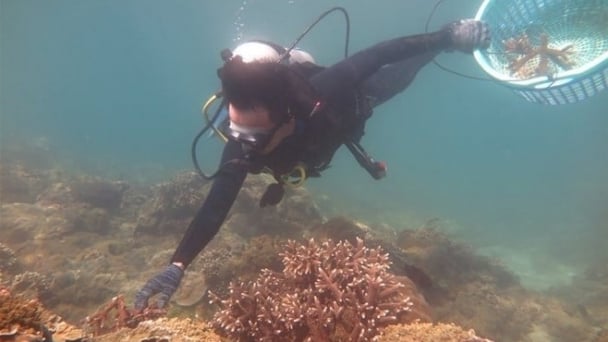
(VAN) The ocean has the capacity to absorb millions of tons of carbon, provided that mangrove forests, coral reefs, and biodiversity are protected.